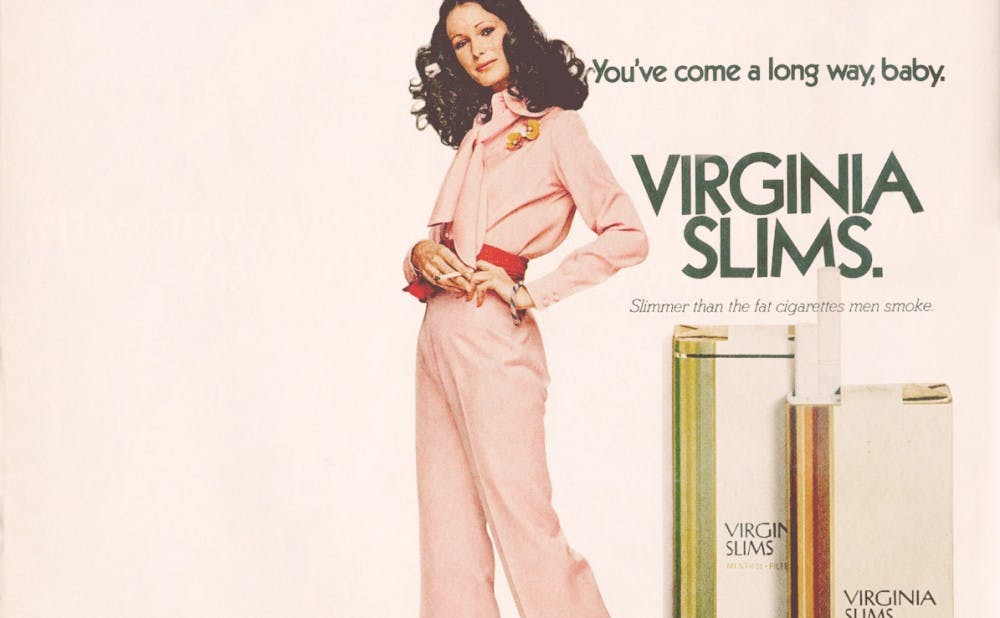On May 16, Duke students in the Story+ program began their two-day bootcamp to train in various humanities research methods. Unlike the typical image of a researcher in a lab, hovering over an experiment, the six-week Story+ program focuses on methods such as archival research, visual and audio content analysis and oral histories, along with an output that tells a story to connect to a wider audience.
This year, the program — which is born out of the John Hope Franklin Humanities Institute as well as Bass Connections — consists of 10 different project teams that each explore a different topic. For instance, according to the Story+ project summaries, the “#MyVoiceMyBody” project aims to dive into the history of female preachers at Duke Chapel through the years, while the project titled “The Other Side of Hungry River” plans to use “the honesty and irreverence of art to find new insight into the history and culture surrounding the treatment of mental illness in the southern United States.”
Another project, “23 and We,” will look into genetic ancestry testing advertisements to understand the context and consequences of the choices made in those types of ads. Adam Hollowell, one of the project team leaders and senior research associate at the Samuel DuBois Cook Center on Social Equity, said this project is particularly interdisciplinary, making use not only of his background in ethics but also the expertise of Keisha Bentley-Edwards, fellow team leader and associate director of research at the Cook Center, in racial socialization and the consequences of stereotypes.
The graduate student working on this project, Patricia Bass, also brings experience with visual content analysis to the table. Hollowell said the team is “extremely fortunate” to have Bass on board due to this specialty, as the project will primarily use visual and audio content analysis.
Reference archivist Joshua Larkin Rowley is also one of two faculty members heading up a project that will analyze advertisements. However, the project, “Consuming Women, Liberating Women,” will focus not on modern-day advertisements, but on the history of women, feminism and the advertising industry throughout the 20th century. The project team will use archival research methods and analyze the materials found in the Rubenstein Library to create a website that will aid future researchers as well as bring the stories to the general public.
Larkin Rowley wrote in an email that this project also provides an opportunity for student exposure to the archives and primary source research, as this type of project is often the first time that students have that experience.
“We’re always looking for a way to deepen undergraduate engagement with our collections and Story+ is ideally suited for that,” Larkin Rowley wrote.
That aspect of engagement is particularly important because, as Tracy Jackson, head of the Center of Manuscript Processing in Rubenstein Library and one of the team leaders for the “Teaching Duke History” project said, archival research can be “intimidating” at first but becomes enjoyable once students start diving in.
The “Teaching Duke History” project also encourages student engagement with archival material. The project intends to create a syllabus and outline for a house course on Duke history, and arose from a growing demand for information about Duke’s history. The three undergraduate students on the team have already begun to sift through boxes of material, and a theme for the course has emerged. Amanda Lazarus, the graduate student mentor for the project, said the title is still a working title, something like “Student Voices” or “Student Changemakers,” focusing on the stories of Duke students through the years.
That focus ties into what Amy McDonald, assistant university archivist and one of the team leaders for this project, called “subverting the archives,” something that the faculty at the University Archives have an interest in.
“Archives historically tend to be kind of a top-down enterprise where the people in power are the most carefully and extensively documented,” McDonald said. “We’ve kind of wanted to subvert that and draw out the stories of people who are not as well acknowledged in the archives and try and rebalance that history.”
Story+ also creates a framework in which the focus is on student learning and student exploration. Hollowell said that the “23 and We” project does not have predetermined outputs because they want students to identify the aspects that they intend to focus on.
“It’s important that the research output account for the students’ own positionality and relationship to the research material, which is one of the core aspects of humanities research, reflecting about your own positionality and the perspectives that you take when you undertake research,” Hollowell said.
“Teaching Duke History” also emphasizes the students telling the stories and delivering the message that they’re interested in.
“One of the cool things will be that students will be teaching their fellow students about their history instead of it coming from high above,” said Hannah Rozear, librarian for research services in Perkins and part of the “Teaching Duke History” team.
In the coming weeks, Story+ teams will continue their research work, culminating in a final presentation. Teams may also display the outcomes of their work in the following school year — for example, the “Black Students Matter” exhibit in Perkins Library, on display until July 7, was the product of a Story+ project in 2018.
“Because Story+ is a six-week long project, process is in many ways also product,” Lazarus said. “And that’s something that we’re also helping students to grapple with too. So they’ll have an outcome and a nice product, but it doesn’t have to be completely finished from A to Z.”
Get The Chronicle straight to your inbox
Sign up for our weekly newsletter. Cancel at any time.

